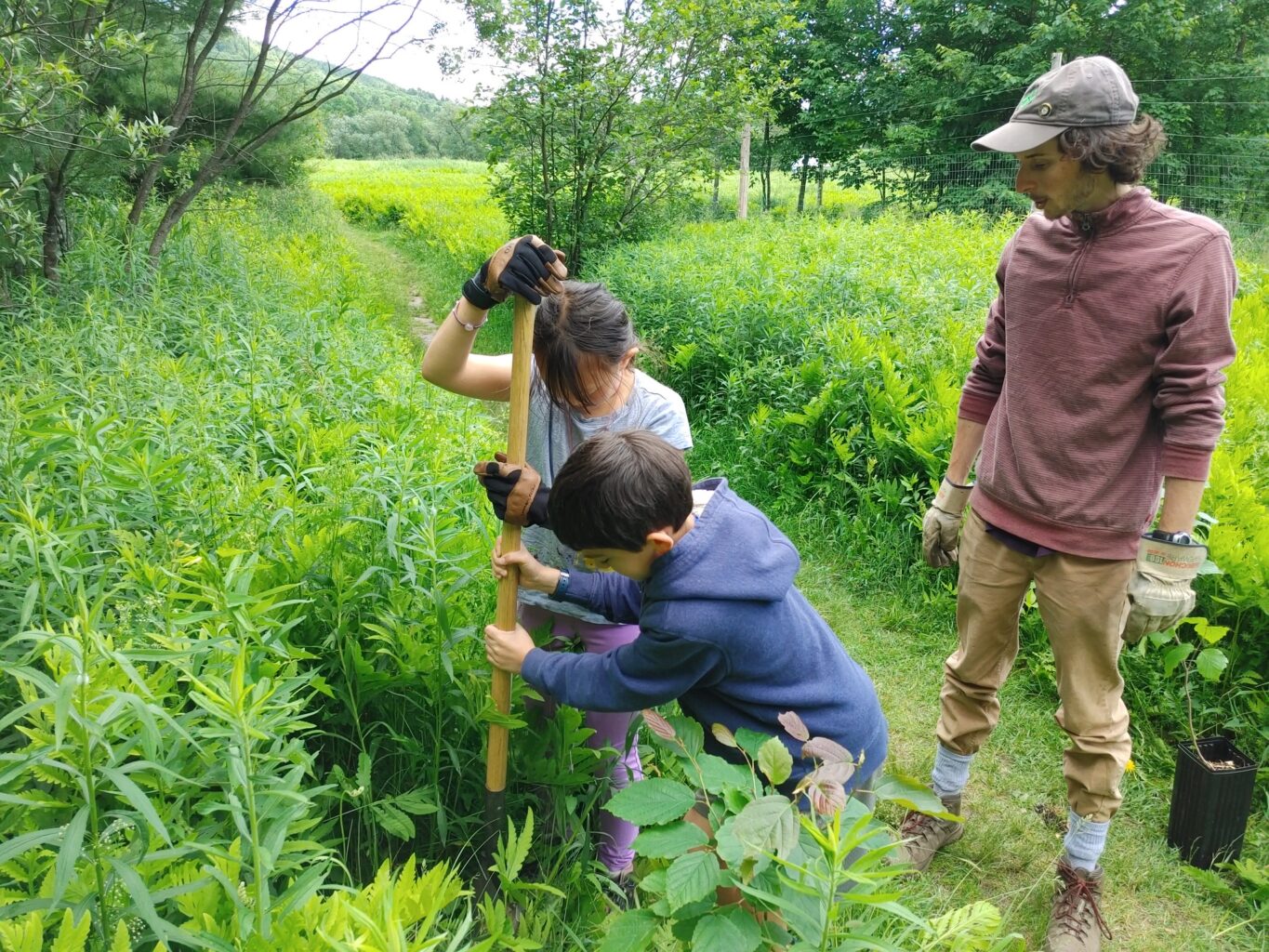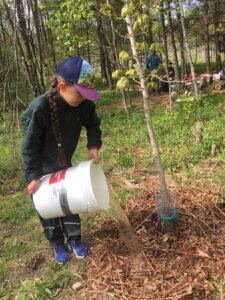Thinking Like a Shrub Willow

By Ken Benton, Director of Education
Often in the spring, when the waters of the North Branch have not fully thawed, massive ice chunks are driven up onto the riverbank, smashing any vegetation in their path. At about the same time, hungry beavers are also spilling out onto the bank in search of fresh vegetation — seeking to fatten back up after using the last of their winter stores. Crushing ice, gnawing teeth, and occasional inundation with flood waters make for an inhospitable home for riverside plants. Shrub Willow, a denizen of the riparian zone, has evolved in this habitat and has developed some fascinating superpowers to overcome these challenges and thrive.
A Shrub Willow branch, cut from its parent shrub, can be unceremoniously shoved into the ground and it will sprout roots and become its own plant. Being accustomed to the natural pruning of riparian zone hazards, the parent plant will send out more than enough new growth in one growing season to make up for the loss of the cut branch. Every spring, we take students for a walk along the riverbanks to take cuttings and replant them in other locations in need of erosion control. On one particular afternoon, I was explaining this process to a group of middle school students in our North Branch Trekkers after-school program when one of the girls in the group said, “Didn’t we do this on an ECO field trip back
in second grade?”
“Yeah,” said another student. “We were sticking sticks in the ground and wading in the river to look at bugs.”
“Do you remember that giant underwater centipede thing?” asked a third child. “It was a ‘hell-something.’ They were so gross… but kinda neat at the same time.”
“You’re right,” I said. “You are thinking of the hellgrammites that we were catching at the macro-invertebrate station. We were looking at what bugs lived in the river to help determine how healthy the river was.”
“I remember we also pulled up knotweed and made it into ice cream,” the first girl said. “That was so good! Didn’t we do that somewhere right near here?”
 She was right, the knotweed patch (now a shadow of its former self) was right next to where we were standing. We quickly realized the shrubs that we were currently taking cuttings from had grown from cuttings that we had placed in the ground four years prior. Our collective minds were blown in that moment. The children that I had planted the one-foot-long cuttings with were barely past my waist at the time. Now, most of them were up to my shoulders, while the willows that we had planted together towered above us all.
She was right, the knotweed patch (now a shadow of its former self) was right next to where we were standing. We quickly realized the shrubs that we were currently taking cuttings from had grown from cuttings that we had placed in the ground four years prior. Our collective minds were blown in that moment. The children that I had planted the one-foot-long cuttings with were barely past my waist at the time. Now, most of them were up to my shoulders, while the willows that we had planted together towered above us all.
Our hope is that a childhood full of positive experiences in nature will lead to more eco-conscious behaviors and choices as adults. But stewardship projects usually work on timescales that make it impossible for volunteers to see the outcome. By building long-term relationships into our children’s programs, kids see the impact they can have.
Willows don’t know that their roots are stabilizing banks or that their branches are serving as homes for Yellow Warblers. They don’t regenerate quickly because they know that beavers and moose count on them as a food source. Willows simply live and try to survive in their space. Things are not so automatic for us. Our actions no longer inherently work towards a healthy balance. Instead, we must make the conscious decision to think about how our lives affect the rest of the living world. We seek to provide a positive environment to grow a generation of resilient individuals that can mutually thrive in and with
an ever-changing habitat — just like the willow.

